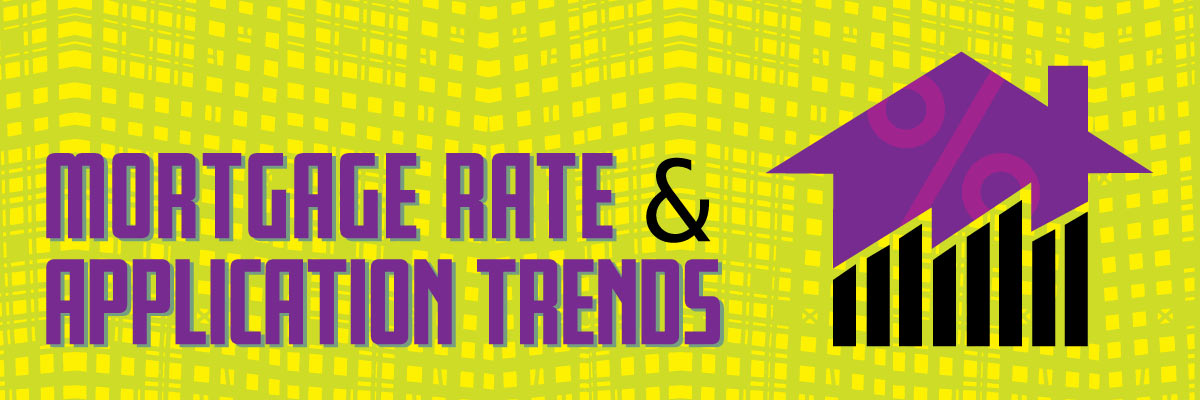Where Are Mortgage Rates Headed?
October 1, 2020

Did mortgage rates just drop again? Why yes, they did! The average 30-year fixed rate mortgage rate this week was 2.88%, which means that the 30-year FRM rate has been below 3% for 10 consecutive weeks, fueling a surge in both refinance and purchase applications activity.
According to the Mortgage Bankers Association (MBA), as of the third week of September, refinance application volume was up 52% over last year and the volume of purchase applications was 22% higher than a year ago. Mortgage applications dipped slightly last week, largely due to a decline in refinancing activity. However, the MBA is projecting that there will be $1.75 trillion in refinance activity in 2020, a level not seen since 2003. Historically low rates are driving the increase in refinance and purchase applications.
Why, exactly, are rates so low?
- Low federal funds rate. As a result of the sharp economic downturn, the Federal Reserve has cut short-term interest rates to zero or near zero to help keep the economy afloat. The Federal Reserve does not set mortgage rates directly; however, the federal funds rate can move the 10-year treasury rate which does impact mortgage rates.
- Fed purchase of mortgage backed securities. The Federal Reserve has purchased more than $1 trillion dollars of mortgage-backed securities (MBSs), which are bundles of mortgages sold to investors. This action means that the risks to lenders are lowered, leading to more available credit and lower rates.
- Other factors. Mortgage rates are driven by a range of other factors not related to the actions of the Federal Reserve, including the inventory of available homes for sale and capacity constraints on the part of lenders. The mortgage rate available to a particular applicant depends on his or her credit history, down payment type, loan type, loan term, and mortgage points.
So, are mortgage rates going to stay low? Or should we expect them to rise in 2021?
The longer the economic recovery remains uncertain, the more likely rates will remain low. Many economists are predicting that the economic recovery will slow in the 4th quarter of 2020 because the Federal government has failed to pass new COVID-19 stimulus legislation.
In addition, because mortgage rates are partially determined by demand, low inventory could actually keep rates low. With housing inventories at record lows, applications for purchase mortgages may fall as would-be buyers become discouraged and decide to put off their home purchase. Fewer applications for purchase loans could keep rates from being driven upward.
Therefore, it is likely that mortgage rates will remain in historically low territory, at least through the 1st quarter of 2021.
There is one important factor that could make refinance rates higher. Fannie Mae and Freddie Mac have announced that there will be a fee imposed on refinance mortgages that could move refinance rates higher. Originally set to be introduced on September 1st, 2020, Fannie and Freddie have postponed the implementation until December 1st. It is not 100% certain that the new policy will be put into place, since there has been widespread condemnation of the idea from a range of industry groups. The MBA has found that the proposed fee could increase the average cost of a refinanced loan by $1,400.
Overall, low mortgage rates have been a boon for the real estate market. However, low rates have been somewhat more advantageous for existing homeowners who are refinancing than for new homebuyers. Rising home prices have eroded some of the benefits of low rates. A low mortgage rate can allow a buyer to secure a cheaper mortgage, but many may find it harder to come up with a down payment.
*Information as of October 1, 2020
You might also like…
Key Takeaways: February 2025 Virginia Home Sales Report
By Virginia REALTORS® - March 25, 2025
Key Takeaways There was a pullback in closed sales in February. There were 6,129 homes sold statewide this month, down 9% from last February, a reduction of 604… Read More
March Madness Meets Market Madness: Construction Trends in Virginia’s College Towns
By Abel Opoku-Adjei - March 18, 2025
Ongoing economic concerns are impacting both single-family and multifamily construction across the country. According to the National Association of Home Builders, multifamily construction starts are expected to decline… Read More
See It, Want It, Buy It: Single Female Homeownership
By Dominique Fair - March 11, 2025
Women have fought for a lot over the last 177 years, whether it was for fair wages, the right to vote, or to be able to own a… Read More